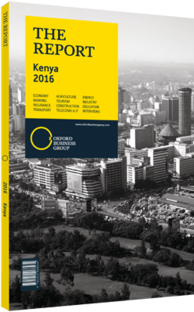Karim S Anjarwalla, Managing Partner, Anjarwalla & Khanna, on the new constitution: Viewpoint

The adoption of a new constitution on August 27, 2010 at Uhuru Park was the culmination of years of debate, consultation and compromise. While the content was the subject of intense dispute, the idea for a new constitution was one whose time had come.
One of the core issues that the new constitution sought to achieve was the decentralisation of power. The principle of public participation in decision-making, the creation of a Supreme Court and specialised land and environmental courts, and the concept that fundamental rights are inherent in all people are just some of the offerings of the new constitution, all of which are aimed at diffusing power from a centralised system and bringing power closer to the people.
Devolution under the new constitution saw the creation of 47 administrative counties, each with its own regional assembly and a mandate to administer certain functions, such as trade licensing, transport and planning and development. Devolution is expected to address years of marginalisation of certain communities and perennial underdevelopment. It will also allow for greater public participation. In this regard, potential investors have the opportunity to pitch investment ideas directly to the relevant organs at the county level, bypassing the bureaucracy of the national government. Counties are similarly able to champion the specific causes that further the well-being of residents instead of lobbying the national government to take up such causes.
In retrospect, a conflict between various governance and administrative bodies in relation to the exercise of powers under the new constitution was always inevitable. Certain incidents illustrate this. For instance, when the national government entered into an agreement for the lease of medical equipment on behalf of the county governments, the county governments did not celebrate their good fortune. Instead, they asked, “Who will pay for that?” Indeed, money has proven to be the root of conflict among various organs. The counties want more of it, but the national government is reluctant to provide it. Some counties have adopted creative means of raising revenue (to the extent of taxing food trucks traversing their borders), and have aggravated their residents and impeded business and industry.
On the flip side, certain incidents illustrate adherence to constitutional principles and the effectiveness of institutions created under it. For instance, as a result of the application of the principle of the separation of powers, the executive was unable to influence the National Assembly to approve the executive’s appointee, Monica Juma, as secretary to the Cabinet. While it is debatable whether the assembly’s refusal to approve Juma’s appointment was merited or not, the whole process proved that the National Assembly is up to the task of checking the executive.
There are concerns that, since the constitution was adopted, Kenya has become more litigious. Kenyans armed with a constitution that allows public-interest litigation and requires public participation in decision-making are not shy about filing civil suits. For an oil explorer whose drilling schedule is delayed by a temporary injunction from a local community, there is not much to be celebrated. However, the overall conclusion is positive – an increase in litigation indicates greater confidence in the judiciary and optimism that problems can be resolved through legal channels.
Constitutions are living documents, always changing to reflect the circumstances and evolving beliefs of the people whom they serve. It would thus be premature, a mere five years later, to form a conclusive opinion as to whether the new constitution is beneficial to the nation. However, it is indisputable that the new constitution has changed the manner in which the country is governed. The involvement of stakeholders, as secured in the constitution, is positive. It ensures a greater sense of inclusiveness, particularly regarding investments in natural resource extraction.
You have reached the limit of premium articles you can view for free.
Choose from the options below to purchase print or digital editions of our Reports. You can also purchase a website subscription giving you unlimited access to all of our Reports online for 12 months.
If you have already purchased this Report or have a website subscription, please login to continue.

